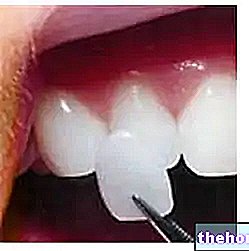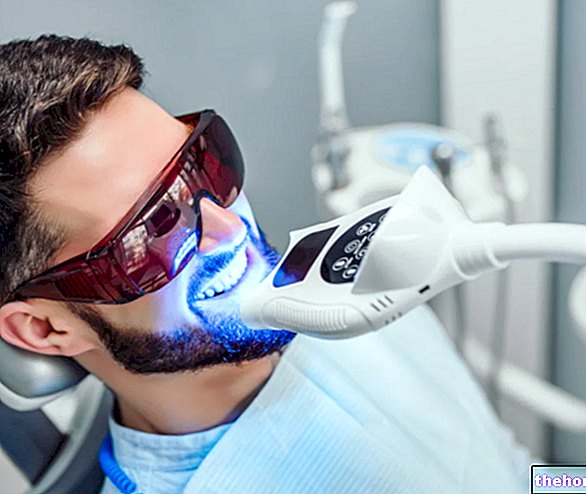Dental cyst: definition
Glossary- Dental pulp: the innermost part of the tooth, richly nourished by nerve endings, arterioles, venules and cells used for the production of dentin
- Dental follicle: embryonic structure from which the tooth originates
- Pulp necrosis: pulp tissue death
- Dental root: section of the tooth inserted inside the alveolar bone, inside which the dental pulp is contained
- Apex of a root: point from which nerves and blood vessels access the tooth
- Root canal: canaliculus inside the root, in which nerve fibers and blood vessels flow

The dental cyst is a well circumscribed pathological cavity, normally provided with a lining epithelium and filled with serous, mucous or gaseous fluid.
Uncoated (capsuleless) dental cysts are called pseudocysts, while pus-filled cysts are considered dental abscesses.
Much like granuloma, dental cyst is a typical complication of pulp necrosis, itself induced by trauma, deep caries or pulpits. There are numerous variants of dental cysts, distinguished both on the basis of the nature of the content and the precise location from which they originate.
Classification
In general, cysts can be categorized into:
- Dental root cysts
- Follicular cysts
- Periodental cysts
To simplify the analysis and facilitate the understanding of the disorder, the table shows the general characteristics of the main variants of dental cysts. However, we remind you that there are other numerous and different classification criteria for cysts: below, only the most common types.
- Apical cysts
- Latero-radicular cysts
- Interradicular cysts
- Residual cysts
- The root dental cyst circumscribes the apex of a tooth with necrotic dental pulp and an infected root canal
- Inside the cystic cavity, the apex of the tooth is not viable
- Dental root cysts often originate from a granuloma
- Its "residual" variant essentially depends on a "bad tooth extraction"

- Lateral pericoronary cysts
- Primordial cysts
- Odontogenic keratinizing cysts
- Eruption cyst
- Follicular dental cysts form around the crown before the tooth completes its eruption from the gum
- They are 10 times less frequent than root canals
- They are formed starting from the epithelium of the dental follicle
- Inside the cystic cavity, there is the crown of a tooth that is still included (not erupted) but vital
- The cause often lies in chronic dental trauma and inflammation
- The progressive evolution of the cyst is rather slow
- It is asymptomatic if the cyst does not give rise to complications

- Periodontary dental cysts
- Sac of pathological origin that grows laterally to the root of a tooth or between two adjacent dental elements
- Extremely rare dental cyst of very small size
- It mainly affects the premolars of the mandible
- Uncertain etiology

Causes
Along with granuloma and abscess, dental cysts are probably the most common complication of pulpitis, an inflammatory process that affects the dental pulp.
However, a dental cyst can also form under different circumstances, as follows:
- Dental inclusion
- Failed devitalization surgery
- Poor dental extraction
- Complication of dental granulomas
Symptoms
It is not uncommon for a dental cyst to be diagnosed randomly, through a simple x-ray dental checkup. In fact, cysts - especially if they are small in size - are rather subtle and equivocal dental lesions, since they generally do not produce any symptoms.
When the dental cyst reaches a considerable size, the patient can experience more or less intense toothache. The symptom profile of the patient affected by a dental cyst can be complemented by other clinical findings such as: swelling of a mandibular / maxillary bone section (in correspondence with the cyst), swollen gums, swelling of the lip, halitosis and, sometimes, dental mobility.
Care
Before proceeding with any treatment for dental cysts, a differential diagnosis with similar pathologies (eg dental granuloma, abscess) and, above all, with tumor neoformations, is necessary - as well as indispensable. To differentiate a benign dental cyst from a tumor, a biopsy is required, which is an invasive diagnostic test that involves the removal of a flap of tissue for subsequent histological control in the laboratory.
A suspicion of dental cyst must be ascertained by specific radiographs, such as orthopantomography (panoramic radiography of the dental arches).
When the cyst causes toothache, its extension is most likely particularly serious, therefore it is necessary to intervene promptly with a more or less invasive intervention.
Given the countless variations, treatment for dental cysts is not standard and depends on where they originate, the severity of the lesion and the nature of the cyst content. In general, some cysts require surgical removal, while others may simply be drained.
Apicoectomy is also an intervention particularly indicated for the removal of cystic masses attached to the root apex. In the most serious cases, however, the removal of the tooth is required.
After having surgically treated the dental cyst, it is strongly recommended to undergo periodic checks and radiographic recalls, in order to avoid (or anticipate) any, possible, relapsing forms.




























